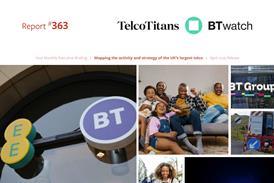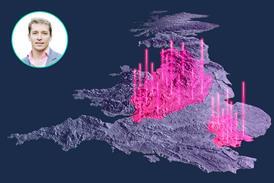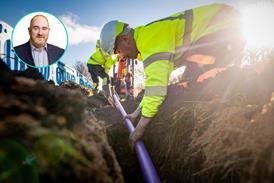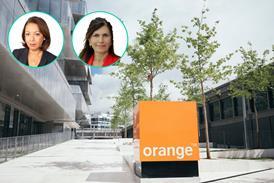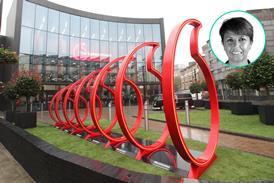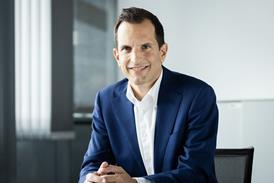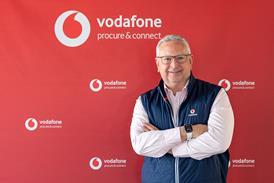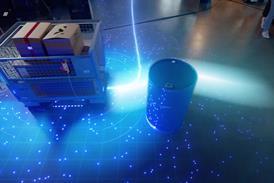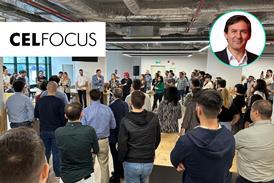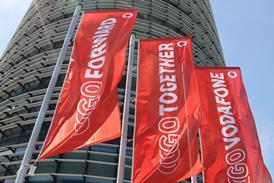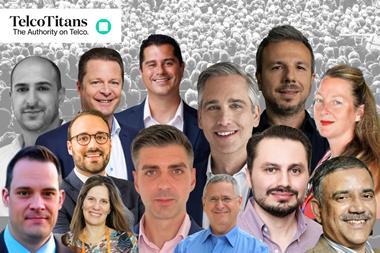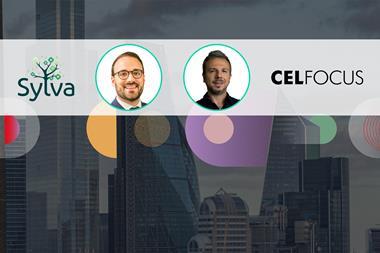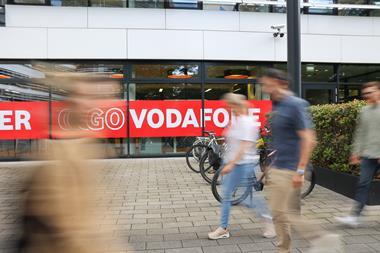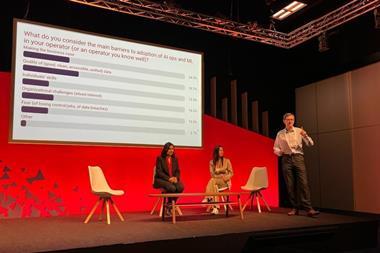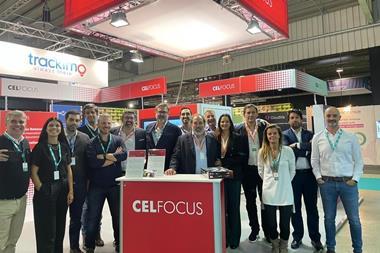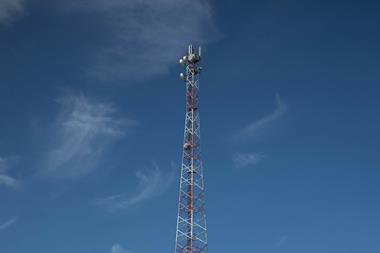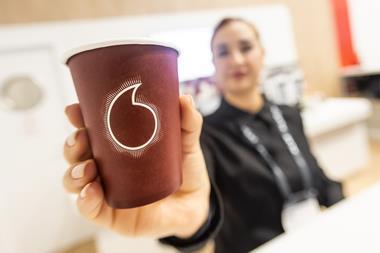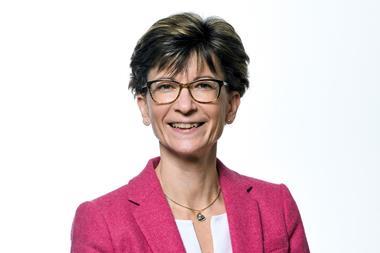- Vodafone, in partnership with Celfocus and Google Cloud, migrated the cognitive components of the CIAS solution serving the Group’s Global NOC to a secure cloud, making it the primary source of network AI-based capabilities.
- The CIAS cloud transition evolves the role and capabilities of the Global NOC, enabling new technologies and services through increased automation, and opening up potential new revenue streams and continuous improvement in operational efficiency.
- Celfocus and Google Cloud both heralded close collaboration on the award‑winning project, with embrace of AIOps putting Vodafone at vanguard of sector innovation.
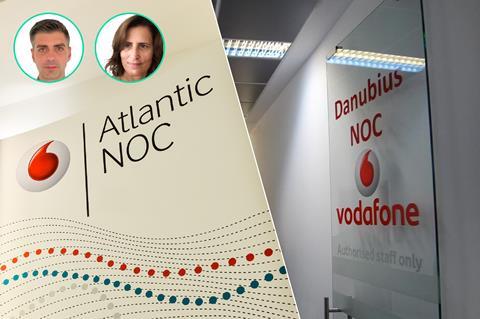
Vodafone, in partnership with Celfocus and Google Cloud, has migrated the cognitive components of the CIAS solution serving the Group’s Global Network Operations Centre to a secure cloud, making it the primary source of network AI-based capabilities.
The migration programme, undertaken in partnership with European systems integrator Celfocus and hyperscaler Google Cloud, has drawn accolades and plaudits, such as the Operator Award at this year’s FutureNet World, which recognised the project as one of the world’s first network AIOps migrations to the cloud.
The project is said to have advanced smoothly and was apparently a first of its kind on the Google Cloud, and “it’s been an exceptionally well run project for a very, very complex migration”, according to Simon Norton, Head of Digital Networks & OSS for Vodafone.

Norton, who considers CIAS a vital element of Vodafone’s wider network transformation, highlighted a series of gains from moving it to Google Cloud. This transition has enabled the operator to significantly enhance incident discovery speed, ensuring quicker response times and more efficient problem management. Additionally, decision-making accuracy has improved due to faster insights from real-time streaming processes, all turbocharged by the shift to a cloud-native environment.
For Vodafone, the lasting significance of the CIAS cloud transition is said to be the opportunity it presents to evolve the role and capabilities of its Global NOC. This evolution facilitates the adoption of new technologies and services that rely on increased automation to be viable. Moreover, it opens up potential new revenue streams and continuous improvement in operational efficiency.
The initial challenges at Vodafone Global NOC
The Vodafone Global NOC manages complex network environments across all European markets supporting first line activity. Initially, the NOC faced several challenges:
- A large workforce of NOC engineers engaged in manual, repetitive tasks.
- Process fragmentation due to differing processes across markets.
- High tool complexity with approximately 500 tools, resulting in a vertical per market OSS stack.
Vodafone quickly recognized that to overcome these challenges and achieve efficiency, customer experience (CX), and operational excellence goals, it was essential to implement AI and automation underpinned by process standardisation and OSS simplification.
Developed by Celfocus in collaboration with Vodafone, CIAS is comprised of a cognitive layer and an automation engine, working within an integrated console to provide full network visibility for the NOC. It comprises various AI and machine learning algorithms to autonomously optimize end-to-end incident detection and resolution across the RAN, core, and transmission domains.
With CIAS in place, NOC operators have been moving towards a new working environment based not on monitoring alerts sparked by issues, but on overseeing and directing the automated response to those issues. On top of this platform, DevOps teams are developing new use cases that are intended to optimise and expand automation in pursuit of the zero‑touch operation goal.
The first version of CIAS’ key building blocks included the CELFOCUS Omnichannel portal, Cloudera (for analytics), and Resolve (for automation engine). Celfocus partnered in this journey from the start as the key integrator and was also responsible for CIAS operations. Over time, and as planned, Vodafone took full ownership of the solution’s support and development. Celfocus remains the advisor for its evolution. This led to the joint project to take CIAS to the next level by migrating it to the cloud.
Taking NOC automation to cloud level…
The CIAS programme was formulated in 2019 to advance AI and automation in network monitoring, triage, ticket creation, and resolution, with an initial on-premises architecture.
Between 2019 and 2021, considerable progress was made with five markets onboarded to the solution. However, Vodafone wanted to simplify the onboarding process due to the massive complexity of enabling the solution, particularly OSS integration. Additionally, the operator aimed to enhance process standardisation to facilitate the reuse of processes.
In response, Vodafone pivoted in 2021-2022, forming the Vodafone Europe One Tech Team and launching two highly complementary transformation programmes: OSS simplification and modernization, addressing legacy challenges, and process standardization along with operating model changes to achieve a true multi-market NOC model. This approach improved the economics of enablement by reducing integration points and increasing process standardization.
With these foundational elements in place, Vodafone sought to further advance the CIAS programme.
The on-premises setup was limiting, necessitating a massive lifecycle upgrade involving the need for code refactoring. With Google Cloud becoming integral to Vodafone’s cloud strategy, marked by excellent progress and industry-leading capabilities (such as hundreds of network data sources and two petabytes of data), the logical next step in 2022 was to evaluate the possibility to transition to a cloud-native solution. This strategic decision was made when the original iteration of CIAS needed a refresh.
Vodafone’s Norton highlights that during this period, Vodafone made significant progress with its Google Cloud strategy by migrating commercial and network data sources to the cloud and eliminating on-premises data lakes. This enabled Vodafone to rearchitect CIAS, moving its analytics and AI capabilities to Google Cloud, thus avoiding a costly on-prem upgrade and leveraging Google Cloud investments.
He also noted that CIAS can now bring in additional data feeds from the operator’s cloud‑based primary data ocean, including crowdsourced data, to further enrich automation and provide operational benefits in areas such as performance management.
Ana Migueis, Vodafone’s Principal Manager for Digital and OSS End to End Solution Design, who is accountable for the CIAS introduction and migration to cloud, noted that such data-sharing can have mutual benefit, too.

As well as making support of network operations simpler, migration of CIAS to Google Cloud means that “we contribute now to the enrichment of a data ocean that can be used by multiple projects within Vodafone. The time required to enable and curate data sources is significant, and the ability to re-use these data sources is a key accelerator, making it a complete win-win situation”.
A “cautious” mindset enables a “flawless” migration
Migration of CIAS to Google Cloud was undertaken alongside principal partner Celfocus after considerable planning and recognition of the challenges that a transition of this magnitude entails.
The impact of possible pitfalls during the transition were considerable, with NOC teams relying heavily on the automation technology to ensure networks run as they should. This engendered a safety‑first approach that entailed a staggered market rollout, with constant testing to ensure no bugs or other issues infiltrated systems.
Norton is unapologetic in emphasising that some timeframes were deliberately elongated to minimise risk. The outcome, he says, was a “flawless” migration.
“ The best comment that I think I could say from the internal customer side of things is that the migration was silent and invisible to them — and anybody involved in large scale IT migrations knows that is high praise. ”
Norton.
… with GenAI-enablement promising even more
“ We now stand exceptionally well placed to complement the narrow AI and ML capabilities in the current solution with new GenAI capabilities, fully aligned with our wider Vodafone reference architecture and safe/ethical AI principles. Trials are already underway, showcasing our commitment to innovation. ”
Norton.
The tangible benefits from the CIAS cloud migration are already dramatically evident, with Vodafone providing significantly faster and better service to its customers.
According to the operator, there has been a 90% improvement in the mean time to detect incidents, triggering 60 ‘incident journeys’ and achieving over 50% automation in diagnosis and troubleshooting, allowing for faster responses with minimal human intervention.
Migueis considers that “we now have more efficient network operations”, with a system that is detecting and classifying events more quickly, and responding faster.
“ There are no waiting times, there is reuse of data sources, and overall total cost of ownership — from infrastructure to operation of the solution and running costs — is reduced. ”
Migueis.
She also anticipates the potential for adding generative AI into use cases, enabling another leap forward, as a natural extension of machine learning applications already in place.
Norton also sees Vodafone’s AI Booster playing a critical role in the field of network operations. Initially applied to customer experience, loyalty, and product recommendations, this capability has been developed in conjunction with Google, and can be used to create new AI-enhancement.
“ We can now actively explore how we enrich zero‑touch network monitoring and ticket handling journeys, which traditionally rely on more traditional, narrow machine learning AI techniques. ”
Norton.
CIAS upshift also supporting Vodafone’s tech skills transformation
Norton also considers that upscaling CIAS to Google Cloud is a boost to Vodafone’s efforts to upskill and reskill its teams in response to the evolution of digital network services.
“It’s easy to fall into the trap of making it all about efficiency, especially on payroll”, he says, adding that such an approach is “counterproductive” by causing internal resistance and headwinds that undermine the benefits of effectively deployed automation and AI.
“Vodafone”, he says, “wants to create an environment where everybody embraces these types of solution because they’re so important for our customers, for us, and for our growth journey”.
Norton notes that over 50 people in the operations team have been retrained and upskilled in areas such as data science and engineering as well as agile development, reflecting the new requirements on the unit. They are now working in positions where they influence the ongoing evolution of the CIAS solution.
“ We’ve been able to utilise this migration to reskill and build more of that internal workforce and take more control. ”
Norton.
The impact of automation on skills is not only benefitting current teams, but also providing fuel for future developments.
The greater automation within CIAS is said by Norton to have “helped us break the connection” between the increases in network complexity and sophistication, and the need for ever‑greater operational resource to support this — thereby creating “headroom” for innovation within existing teams, including across network cloudification, 5G, and software‑defined networking.
“ CIAS has been a major factor in stopping a huge payroll explosion, as we continue to assure the more legacy side of our networks, and also gear up and get ready or, indeed, as we are today, operate some of these new, more modern network technologies. ”
Norton.
Behind the supercharged CIAS: collaboration
Norton highlights that broad collaboration was critical in achieving success, with different internal Vodafone teams working closely towards common goals with Celfocus and Google Cloud.
He describes this as a standout example of the operator’s unified tech strategy bringing traditional OSS communities, digital transformation‑focused teams, and IT colleagues together with external partners to reach a common goal.
“ The benefits have been quite profound across a range of factors: operational excellence, training and reskilling within the workforce — creating headroom within the operational workforce to make sure that they’re ready to support and assure our evolved and modernised networks. So we couldn’t be happier with the solution, and we’re really looking forward to seeing it move to the next level. ”
Norton.


Vodafone’s partners are equally effusive.
Daniel Dias, the Vodafone Executive at Celfocus, said the work undertaken on the CIAS migration is “at the forefront of technological innovation”, and he places Vodafone “at the vanguard of the sector” at a time when the digital landscape is rapidly evolving.
Vivek Gupta, Head of Telco AI Solutions and Partnerships at Google Cloud, described the coming together of Google Cloud and Celfocus expertise with Vodafone as powering “new capabilities that significantly improve network automation and move the telecommunications industry forward”.
Celfocus and Google Cloud are together helping to make Vodafone’s transition from on-premises infrastructure to the cloud easier and faster.
The CIAS journey was presented at TM Forum’s DTW24– Ignite event in Copenhagen during the Redefining Network Operations: Vodafone’s Industry-First AIOps Cognitive Automation in the Cloud session. This featured Mabel Pous-Fenollar, Head of Digital & Zero Touch Operations at Vodafone, and Carla Penedo, Director of Offer Development & Innovation at Celfocus.
Simon Norton — whose remit encompasses strategy, planning and engineering for Vodafone’s OSS and digital network domain strategy for its Europe markets and international networks — was also prominent at DTW24, including his Hyper-Personalization in the Age of GenAI interview. TelcoTitans Eventwatch covered this live.
As reported from DTW23 last year, Celfocus has also provided Vodafone with and AI- and ML-enabled automation solution for monitoring across the operator’s enterprise services portfolio, encompassing the operator’s IoT operation where it boasts the scale and demands of a global leader.





